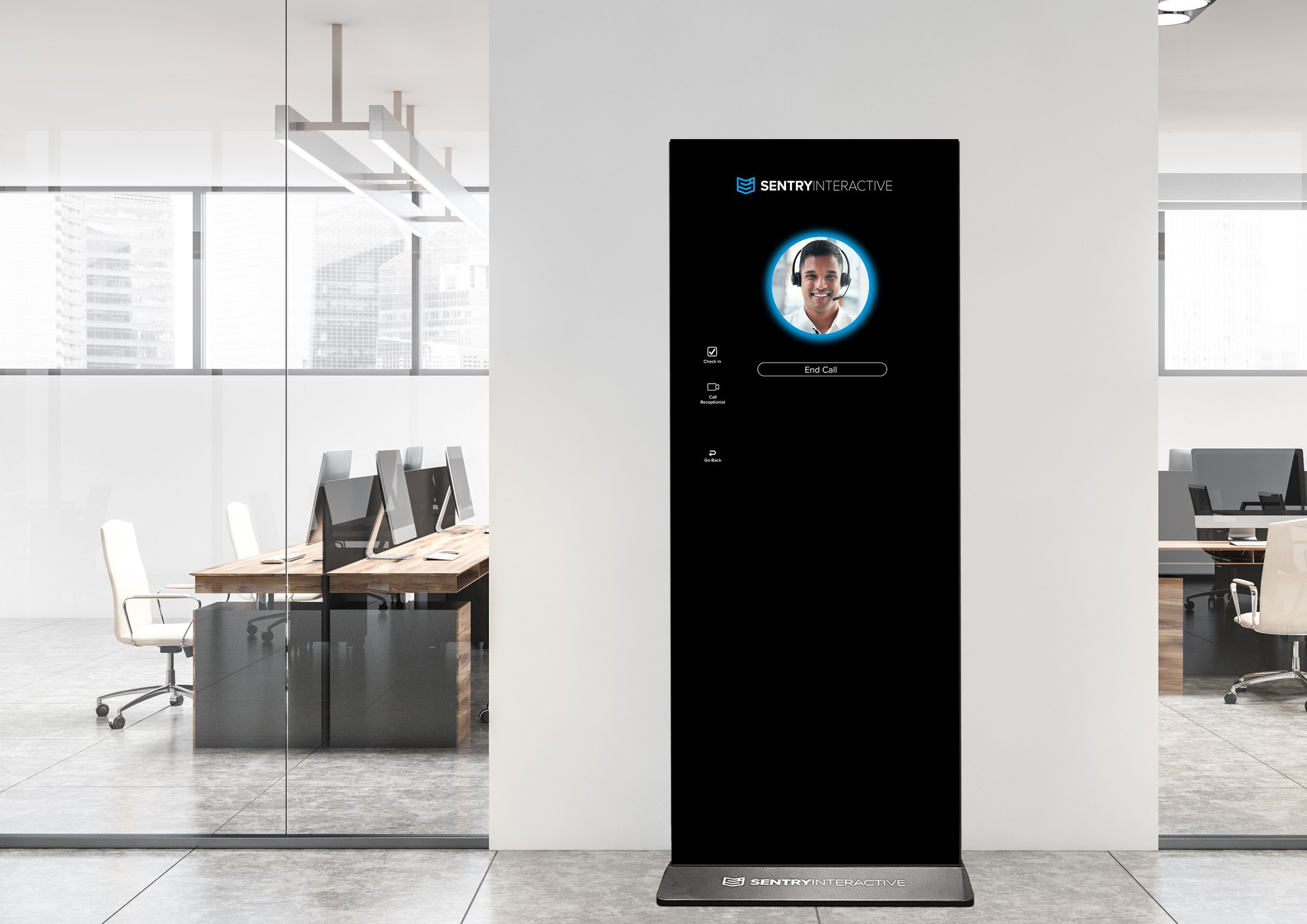Front desk operations are more than just the entry point to the workplace—they’re the cornerstone of a building’s visitor management. Creating an efficient flow of personnel through active support and access controls is fundamental to the visitor experience, which is why so many building resources are allocated to the ground floor. The long-established practices for operating a front desk may seem like a solved problem—but now, new virtual receptionist services are transforming standard expectations.
A virtual receptionist works around the clock to support building access, workplace communications, and visitor management. Building managers can use these new services to save on expenses and augment their reception desk’s functionality with remote support.
Transforming Visitor Experience with Virtual Receptionist
Introducing a digital receptionist to assist with building operations can transform everything from budgets to customer service. Buildings that adopt virtual receptionists can offer an unmatched level of support in various capacities. As remote services become more widespread, visitors will likely come to expect the convenience digitization can bring to the front desk.
But what are these perks exactly? Let’s dive in further.
How A Virtual Receptionist Enhances Customer Service
People often have an instinctive aversion to automated customer service. Building managers often worry that removing the warmth of human interaction at the front desk might diminish the visitor experience. However, what if a virtual receptionist had that welcoming human touch?
Some of the most advanced digital receptionist services allow visitors to interact with a real human receptionist through a screen. Whereas some virtual receptionist solutions rely solely on cold and unintuitive AI automation to handle customer interactions, the leading digital reception services combine the latest technology with the support of fully trained staff capable of interacting with visitors through on-site terminals. This allows for more efficient front desk support services without losing the ease that comes with human interaction.
Notably, digital receptionists also improve the visitor experience by offering 24/7 support to on-site staff and visitors. Visitors can receive prompt service regardless of when they reach out—and buildings can provide this around-the-clock service with trained virtual receptionists that can answer questions and provide prompt service across multiple sites. The resulting ability of the virtual receptionist to service multiple visitor touchpoints from a remote location can also result in significant cost savings.

Streamlining Front Desk Operations with A Virtual Receptionist
A building’s front desk is the access point to every business it houses. It handles an intensely high volume of people every day—so it’s vital that operations run at maximum efficiency to avoid bottlenecks.
A virtual receptionist is the key to operating at the speed necessary to avoid wait times. This can be done through several key features, first and foremost of which is remote in-person wayfinding. The remote receptionist routes customers to the appropriate office right away, minimizing wait times for employees or visitors by handling influxes of customers more efficiently.
The virtual receptionist can also use existing calendar software to book meetings and rooms. This can eliminate friction in the customer service process for building visitors and callers, who can get support without a wait.
Financial Benefits of Adopting Virtual Receptionists
The customer service benefits of integrating virtual receptionists are compounded by the fact that incorporating remote services can be more efficient and, thus, much more cost-effective than expanding on-site staffing levels. The ROI of a digital receptionist makes the service essential for building managers trying to improve their visitor experience without going beyond their budget.
On top of these budgetary benefits, you can scale up and down factors such as video call volume requirements based on need. Building managers can optimize costs by tracking visitor volume to scale up service during peak times and down during slower hours.
The Role of Hardware: Supporting the Functionality of Virtual Receptionists
Once a building decides to implement a remote in-person receptionist via a digital service provider, the next step is establishing the screen infrastructure required to create a physical presence at the front desk. This requires considering what the ideal visitor flow and service functionality look like for the building. Factors like access control, visitor check-in and management systems, digital communication content, and interaction should all be considered.
The digital receptionist’s physical hardware location should reflect the traffic flow through the lobby. Oftentimes the virtual receptionist can reside at a check-in kiosk on an interactive touchscreen; this allows the visitor to interact with the real-life human presence on the screen to receive support. However, the system will require additional accessories if the digital receptionist is going to manage functions like access control. Hardware components such as card readers, biometric scanners, and door controllers are typically required for seamless integration with the front desk and visitor management systems.
However, in the case of the Sentry Interactive Tower, we do not require a reader for mobile access to be integrated with our digital front desk and remote in-person receptionist product.

Embracing a Modern Solution
The bottom line is that integrating a virtual receptionist can cost-efficiently improve a building’s customer support infrastructure. Visitors can avoid long wait times in the lobby.
Virtual receptionists streamline front desk operations by handling critical tasks such as visitor check-ins, remote in-person video calls with a receptionist or concierge, and meeting or room scheduling.
But only the most sophisticated virtual services continue to prioritize keeping the warm human feel of the reception desk—so it’s important to invest in the best technology available. Sentry Interactive offers the leading virtual receptionist solutions; their digital front desk systems can create a truly seamless visitor experience.
Sentry’s visitor management solution can issue digital access passes and manage controls through the app. The system customizes individual passes to operate within certain timeframes, which supports increased security measures.
Sentry combines the best aspects of human intelligence with digital capabilities to provide a more efficient service—yet still leverages the unmatchable level of support that customer service agents can offer.
Reach out to learn more about Sentry Interactive’s virtual receptionist.


